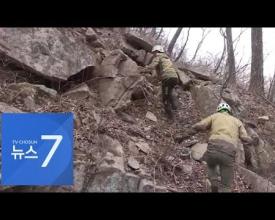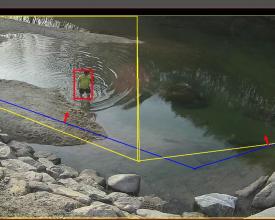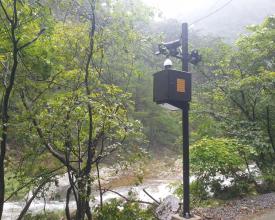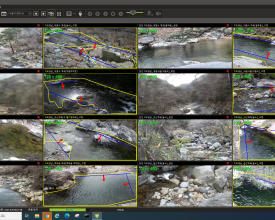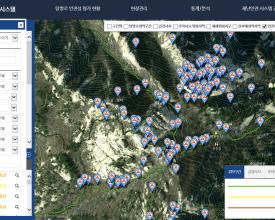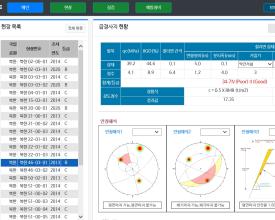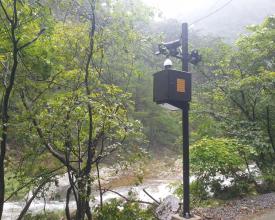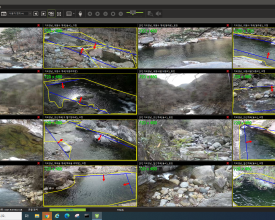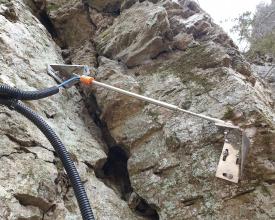
AI-based visitor safety management system of Korean National Parks
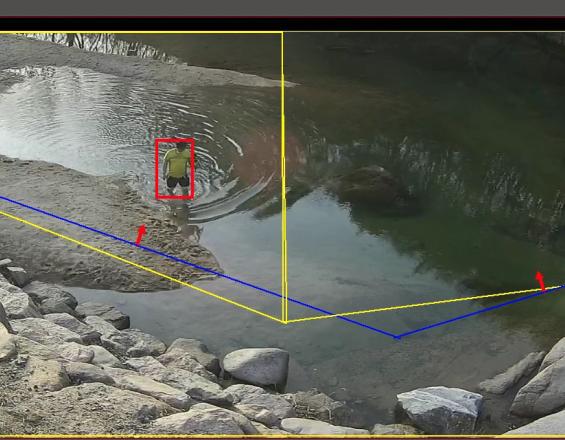
“Are there any innovative solutions for national park visitors to meet nature without any risk of danger?” The long-standing concerns of Korean park rangers have begun to achieve great results by establishing an AI-based visitor safety management system using the latest technology. This system automatically monitors and analyzes the potential safety hazard areas in national parks 24 hours a day by combining measuring equipment such as CCTV, crack gauge, and artificial intelligence. When signs of danger are identified, an alarm is sent to the site where visitors are staying and the control center in the national park office for follow-up and to prevent the risks in advance. 89 intelligent CCTVs have been installed in 15 national parks since 2020, and 525 automatic and manual crack gauges have been operated in 174 potential rockfall hazard areas of 21 national parks since 2013.
Context
Challenges addressed
1. It was difficult to select the optimal location where the equipment are operated. For this, spatial analysis of visitor accidents that happened in the past were used, and skilled park rangers and experts did field surveys to find the best place to operate the equipment.
2. Deep learning technology that used intelligent CCTV rarely misrecognized animals as humans. These technical problems will be resolved once the algorithm is improved and sufficient volume learning is done.
3. As there was no commercial crack gauge suitable for the national park rockfall accidents, KNPS researchers worked together to improve the device that suits the Korean national park environment, and it was obtained a patent.
Location
Process
Summary of the process
All the information and data related to visitor safety produced in national parks are collected and managed in an Integrated Disaster Prevention System. As AI-based Intelligent CCTV and AI-based crack gauge are part of the whole system, they are compatible with each other and monitored together, further solidifying the safety management of Korean national parks.
Building Blocks
AI-based intelligent CCTV
AI-based Intelligent CCTV is a scientific safety management system that uses deep learning technology to control emergencies in real-time image analysis. By recognizing and analyzing abnormal behavior patterns, such as intrusion, screaming, wandering, etc., a warning broadcast is immediately sent to the site and delivered to the control system, following the emergency responses.
In addition, in the case of marine/coastal national parks with a high risk of safety accidents due to tides and tides, the broadcast of tide times is automatically issued to the site. Intelligent CCTV was installed in 2020 and is currently being operated in 89 places in 15 national parks.
Enabling factors
The most important enabling factor is to select the optimal location where the equipment can be operated effectively. Intelligent CCTV was installed by selecting areas where drowning accidents occurred frequently in the past. Another success factor is having a set of systems to deal with emergencies. When the AI alarm system is activated, the general control center in KNPS HQ checks real-time streaming to quickly grasp the situation and then rescue teams in national parks on the spot to start rescue operations.
Lesson learned
AI-based intelligent CCTV is a scientific safety management system using deep learning technology. In order to continuously improve the accuracy of deep learning, experts continue to maintain the software and provide technical support in the field so that it can be managed stably. As data for deep learning is accumulating, it is expected that the operating level of the system will be increased. Based on these achievements and limitations, it is necessary to improve the numerous CCTVs that have been monitored by manpower using this innovative technology gradually in connection with the KNPS safety management system.
AI-based crack gauge for rockfall
AI-based crack gauge for rockfall is a device that monitors the occurrence of rockfall and the crack displacements in real-time by installing an observation sensor in a rockfall risky area located along the trail. Since 2013, automatic and manual crack gauges have been installed on steep slopes with a high risk of collapse, and 525 units are currently in operation at 174 locations. The rockfall measuring device is divided into risk levels of 'interest, caution, alert, and serious'. In the interest stage, regular and frequent inspections are carried out. In the caution stage where cracks are less than 5 mm and less than 2°, monitoring is strengthened. In the alert stages, precise investigation and action plans for the disaster are prepared. In the serious stage, the adjacent trails are controlled and emergency measures such as rockfall removal are implemented.
Enabling factors
Prior to the installation of the AI-based crack gauge, a dedicated investigation team composed of geologists and disaster prevention experts was established in advance to systematically manage rockfalls and steep slopes to investigate areas with risk of rockfall accidents along the trails of national parks. In addition, the safety hazardous areas were graded from A to E according to the degree of risk, steepness, and other geologic characteristics and converted into databases.
Lesson learned
81 rockfall events have occurred in the national park during the last 10 years, resulting in 3 deaths and 6 injuries, damaging properties of about KRW 2.1 billion. However, since 2018, when the AI-based crack gauge was used, there has been no fatality or injury to visitors due to rockfalls. In addition, it took a lot of time and labor to inspect all the crack gauges installed throughout the national park one by one. With the saved time park rangers can concentrate more on park other management activities, which greatly improved the internal satisfaction.
Resources
Impacts
In the past, park rangers in the control center monitored all the signals on the screen to identify danger. However, since the AI-based intelligent devices were introduced, it detects abnormal signals 24 hours a day and automatically send an alarm to the site and the control center, which is a great help for park rangers to respond to emergencies even in the absence of monitoring staff.
Since the introduction of the devices, there have been no casualties due to water play or rockfalls in Korean national parks. Korean National Park Service (KNPS) was awarded the 2020 Prime Minister's Commendation for water safety for these achievements. It is expected that the operation level of the AI-based visitor safety management systems will be improved significantly as data for deep learning is accumulated.
Beneficiaries
About 45 million visitors annually visit national parks in Korea, and all of them are potential beneficiaries. The burden on the operation of monitoring staff has also been greatly reduced.
Sustainable Development Goals
Story
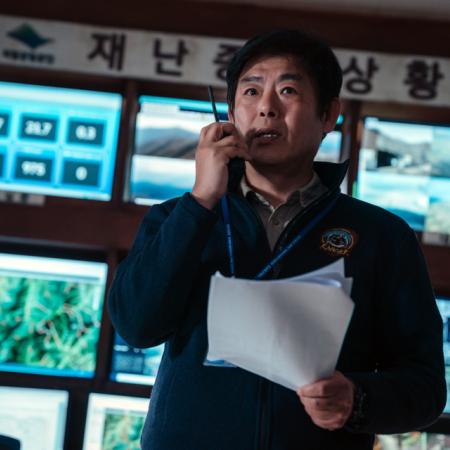
When the emergency alarm ring in the control center, the people who arrive at the site before the 119 are the national park rescue teams. They mobilize several times a day to save someone before they die, and they are willing to go out to protect the visitors even in harsh weather or in situations where their lives are at risk. Many people were inspired to see them navigating through the wild nature, and in 2021, the drama 'Jirisan' with the motif of the national park rescue team was aired - Jirisan is the first national park in Korea and listed on IUCN Green List. In the drama, top Korean actors such as Jeon Ji-Hyeon, Ju Ji-hoon, and Seong Dong-il performed the daily life of the national park rescue team, and the beautiful natural scenery became the backdrop for the drama. In the middle of the drama, various safety management systems used by the Korea National Park Service (KNPS) were also introduced, adding to the fun of watching.

